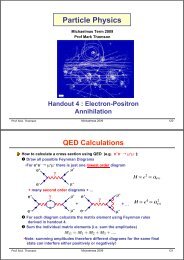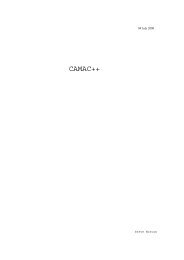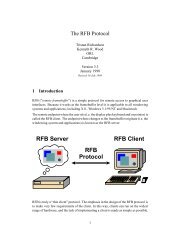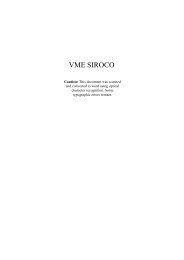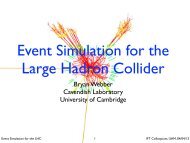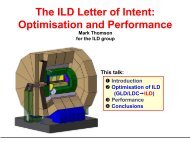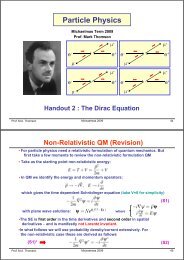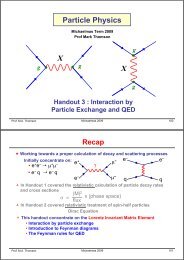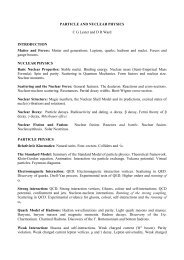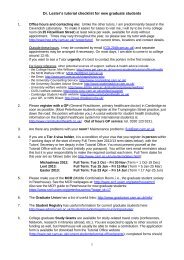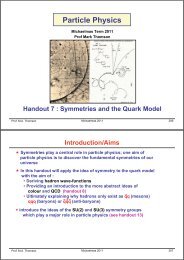Particle Physics - High Energy Physics Group
Particle Physics - High Energy Physics Group
Particle Physics - High Energy Physics Group
You also want an ePaper? Increase the reach of your titles
YUMPU automatically turns print PDFs into web optimized ePapers that Google loves.
Appendix II: Colour Potentials<br />
•Previously argued that gluon self-interactions lead to a long-range<br />
potential and that this is likely to explain colour confinement<br />
•Have yet to consider the short range potential – i.e. for quarks in mesons<br />
and baryons does QCD lead to an attractive potential?<br />
•Analogy with QED: (NOTE this is very far from a formal proof)<br />
Non-examinable<br />
QED<br />
e – e –<br />
e – e –<br />
e –<br />
e –<br />
Repulsive Potential<br />
Static<br />
e +<br />
e +<br />
Attractive Potential<br />
QCD<br />
q<br />
by analogy with QED expect potentials of form<br />
q<br />
q<br />
q<br />
q<br />
q<br />
q<br />
q<br />
Whether it is a attractive or repulsive potential depends on sign of colour factor<br />
Prof. M.A. Thomson Michaelmas 2009 281<br />
Consider the colour factor for a qq system in the colour singlet state:<br />
with colour potential<br />
•Following the QED analogy:<br />
r<br />
r<br />
which is the term arising from<br />
•Have 3 terms like and 6 like<br />
r<br />
r<br />
NEGATIVE<br />
ATTRACTIVE<br />
•The same calculation for a qq colour octet state, e.g. gives a positive<br />
repulsive potential:<br />
Whilst not a formal proof, it is comforting to see that in the colour singlet<br />
state the QCD potential is indeed attractive.<br />
(question 15)<br />
Prof. M.A. Thomson Michaelmas 2009 282




